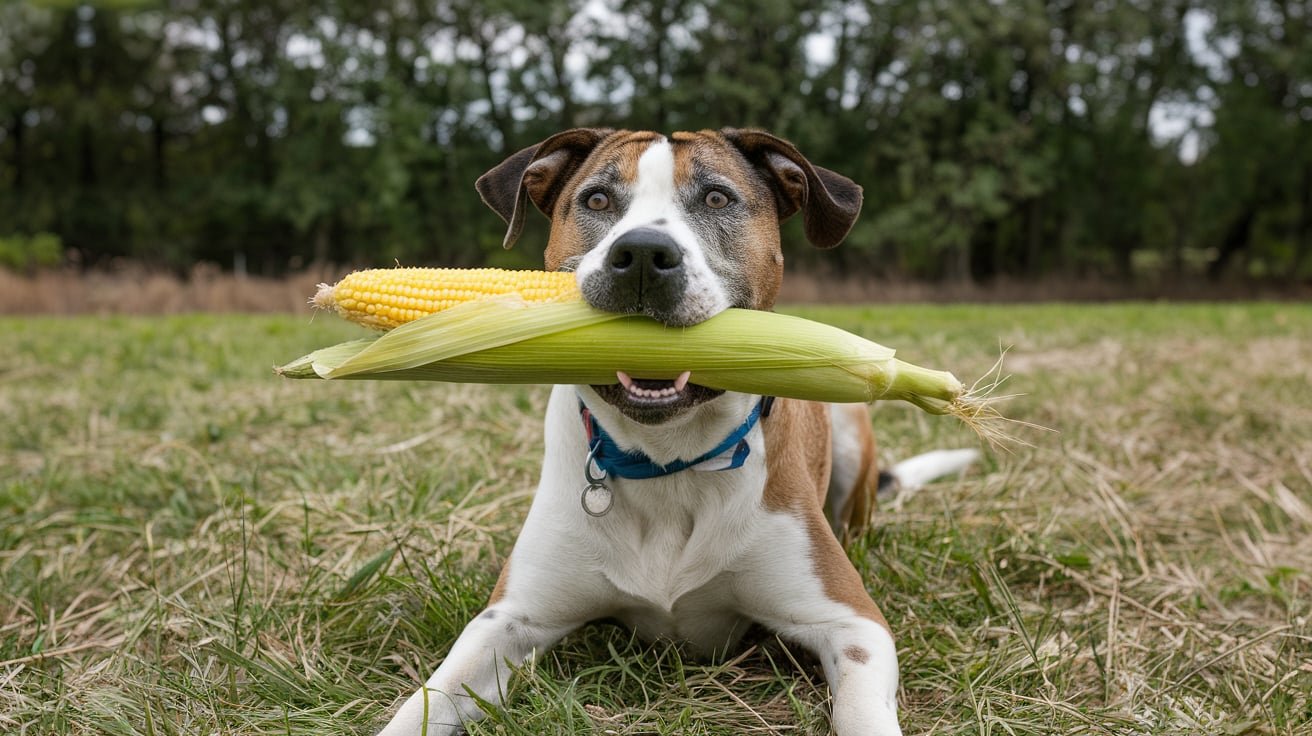My Dog Ate Chocolate But Is Acting Fine
It’s a scary moment for any dog owner: you walk into the room and discover that your furry friend has helped themselves to some chocolate. While it’s well-known that chocolate is toxic to dogs, what happens when your dog seems completely fine after eating it? Should you still be worried? In this article, we’ll explore what to do when your dog eats chocolate, even if they seem perfectly okay afterward. My Dog Ate Chocolate But Is Acting Fine
Why Is Chocolate Dangerous for Dogs?
Chocolate contains theobromine and caffeine, both of which are toxic to dogs. While humans can metabolize these substances quickly, dogs process them much more slowly, leading to a buildup that can become toxic. Theobromine affects a dog’s central nervous system and cardiovascular system, causing symptoms ranging from mild discomfort to severe, life-threatening conditions.
Types of Chocolate and Toxicity Levels
Not all chocolate is equally dangerous. The level of toxicity depends on the type and amount of chocolate your dog consumed:
- Dark Chocolate: The most toxic, containing the highest levels of theobromine.
- Baker’s Chocolate: Highly concentrated and extremely dangerous.
- Milk Chocolate: Less toxic but still poses a risk.
- White Chocolate: Contains very little theobromine but can still cause issues like digestive upset.
Even if your dog ate just a small piece of chocolate, it’s essential to assess the risk based on the type of chocolate and your dog’s size.
My Dog Ate Chocolate But Seems Fine—What Now?
If your dog ate chocolate but is acting normal, you might think they’re out of danger. However, the symptoms of chocolate toxicity can take several hours to appear, sometimes up to 12 hours. Even if your dog seems fine now, you’re not necessarily in the clear.
Step-by-Step Guide: What to Do Next
Here’s a simple step-by-step guide to follow if your dog ate chocolate:
- Determine the Type and Amount of Chocolate Consumed: The more you know, the better you can assess the situation. How much chocolate was eaten, and what kind? For example, a large dog eating a tiny piece of milk chocolate might be less concerning than a small dog eating dark chocolate.
- Monitor Your Dog Closely: Keep an eye on your dog for at least 24 hours. Watch for any signs of chocolate toxicity, which include:
- Vomiting
- Diarrhea
- Rapid breathing or panting
- Increased heart rate
- Restlessness or hyperactivity
- Muscle tremors
- Seizures
- Call Your Vet or a Pet Poison Helpline: Even if your dog is acting fine, it’s always a good idea to reach out to your vet or contact a pet poison helpline. They can help determine whether your dog is at risk and if treatment is needed.
- Induce Vomiting (Only If Instructed by a Professional): In some cases, your vet may advise you to induce vomiting, especially if the chocolate was eaten recently. However, never attempt this without consulting a vet first.
- Provide Supportive Care: If your vet confirms that your dog is not at immediate risk but recommends monitoring, make sure your dog stays hydrated and calm while you watch for any delayed symptoms.
Anecdote: The Curious Chocolate-Eater
A friend of mine once found her Labrador had devoured half a bar of milk chocolate. At first, the dog was acting fine—playful and energetic as always. However, later that evening, he started vomiting and became extremely restless. Thankfully, they caught it early, and with the vet’s advice, he made a full recovery. This situation shows how symptoms can develop over time, even if your dog seems okay initially.
How Long Should You Watch for Symptoms?
As mentioned, chocolate toxicity symptoms can be delayed, sometimes not appearing until 6-12 hours after ingestion. If your dog shows no signs of distress after 24 hours, they’re likely in the clear. However, any sudden changes in behavior, even if they seem minor, should prompt you to contact your vet immediately.
Treatment for Chocolate Toxicity
If your dog does show signs of chocolate poisoning, treatment will depend on the severity of the symptoms. Some common treatments include:
- Induced Vomiting and Activated Charcoal: To prevent further absorption of theobromine.
- IV Fluids and Medications: To stabilize heart rate, control tremors, and support kidney function.
- Monitoring at the Vet: In severe cases, your dog may need to stay at the vet’s office for monitoring until they’re stable.
It’s always better to be safe than sorry. Even if your dog only ate a small amount of chocolate, prompt action can make all the difference.
Preventing Chocolate Accidents
Prevention is the best approach. Here are some tips to keep chocolate out of your dog’s reach:
- Store chocolate and candy in high cabinets or locked containers.
- Be cautious around holidays like Halloween, Christmas, and Easter when chocolate is more accessible.
- Remind guests and children not to feed your dog any human treats.
Step-by-Step Guide: Dog-Proofing Your Home for Chocolate Safety
- Store Treats Securely: Use containers with locking lids or place chocolate on high shelves.
- Educate Family Members: Ensure everyone in the household knows that chocolate is toxic to dogs.
- Monitor Special Occasions: During gatherings, keep a close eye on where chocolate treats are placed, especially if kids are involved.
Final Thoughts: Don’t Ignore the Warning Signs
Even if your dog ate chocolate and is acting fine, it’s crucial to stay vigilant. The effects of chocolate toxicity can take time to appear, and early intervention is key. By knowing what steps to take and being prepared, you can protect your pup from potential harm.
Chocolate toxicity is preventable, and with a little extra caution, you can avoid these scary situations altogether.
Why does my dog ate chocolate but nothing happens?
If your dog ate chocolate but nothing seems to happen, it could be due to the amount or type of chocolate they consumed. **Milk chocolate** and **white chocolate** contain less theobromine, the toxic compound for dogs, compared to **dark chocolate**. Additionally, larger dogs may tolerate small amounts better. However, toxicity symptoms can take several hours to appear, so it’s crucial to monitor your dog closely and consult a vet even if they seem fine initially.
What if my dog eats chocolate but is acting fine at home?
If your dog eats chocolate but is acting fine at home, it’s still important to stay cautious. **Chocolate toxicity symptoms** can take several hours to appear, so even if your dog seems okay now, they could still be at risk. Monitor your dog for signs like vomiting, restlessness, or rapid breathing. It’s also wise to call your vet or a **pet poison helpline** for advice, as they can guide you on what to do next based on your dog’s size, the type of chocolate, and how much was consumed.
What if my dog eats white chocolate but is acting fine?
If your dog eats white chocolate but is acting fine, it’s still important to monitor them closely. While white chocolate contains very little theobromine, it’s high in fat and sugar, which can cause digestive issues. Keep an eye out for symptoms like vomiting or diarrhea. If any unusual behavior or symptoms develop, or if you’re unsure about the amount consumed, consult your vet for advice.
My dog ate chocolate but is acting fine home remedies
If your dog ate chocolate but is acting fine, monitor them closely for symptoms like vomiting or diarrhea. Ensure they drink water to stay hydrated and prevent further access to chocolate. If any symptoms appear or if you're unsure, contact your vet for advice.
My dog ate chocolate 24 hours ago
If your dog ate chocolate 24 hours ago and shows no symptoms, they might be okay. However, monitor for delayed symptoms like vomiting or diarrhea. If any issues arise or you’re concerned, consult your vet.
My dog ate chocolate but is acting fine
If your dog ate chocolate but is acting fine, monitor them for any delayed symptoms. If they show signs of distress or if you’re unsure, contact your vet for guidance.



